Bringing home a new pet is an exciting time in your life – it’s the only time that you truly get to pick who to welcome into your family!
There’s a lot to consider when bringing home a new dog, and we want to make sure you choose a dog that will fit perfectly into your family. Finding a dog that matches your lifestyle is key to ensuring your dog stays in their forever home!
Many new owners are so excited about the prospect of a new pooch that they don’t really take the time to consider what exactly what qualities they want in their new fur companion.
In this guide, we’ll help you develop a customized doggie dream list highlighting the qualities you want in your dog.
Then we’ll help you score and evaluate various dogs you meet (whether through a breeder or at a shelter) to ensure you meet the cheese to your macaroni!
If you’ve already committed to new dog, be sure to jump ahead to Part 2 of our Dog Adoption Guide, in which we discuss how to spend the first 24 hours with your pal!
Consider Lifestyle, Not Looks!
Before you start dreaming about the cutest breeds you’d love to see on your lap, it’s important to remember that you need to find a dog that will fit with you – the cookie to your cutter!
You shouldn’t be selecting a dog based on looks, but rather based on your lifestyle.
While it’s certainly possible to have a couch potato border collie or a super-active basset hound, humans created most breeds with specific goals in mind.
There’s a lot of soul searching and thought that needs to be put into what type of dog will be the best fit for you (and/or your family).
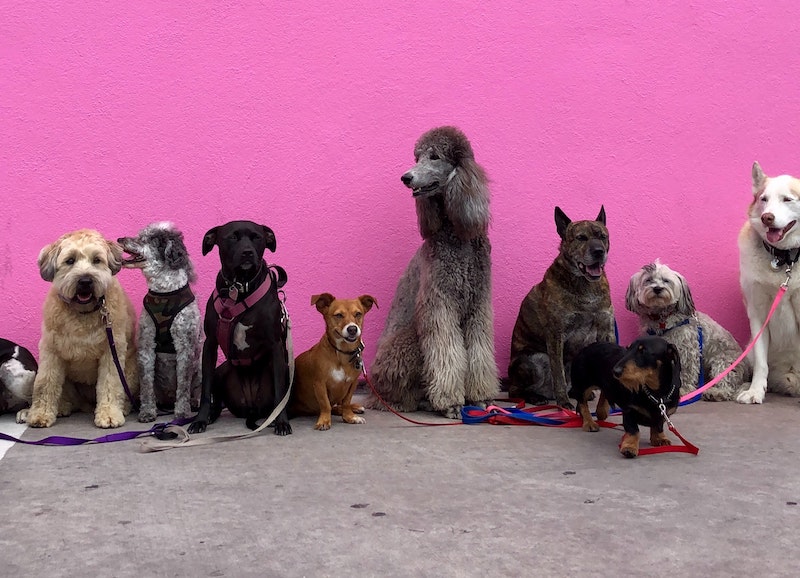
What Are You Looking For In a Dog?
- Do you want a loyal, steadfast companion like a chow?
- Do you want a trail-running buddy or a happy-go-lucky suburban dog?
- Is it important that they like fetch, other dogs, or cats?
Draw up your dream dog!
Make sure you think through what you want your dog’s life to look like, then pick a dog that will enjoy that life. This will also help you think through why you want a dog.
If you just want the occasional snuggle buddy but are daunted by the amount of time, energy, and money a dog needs, consider becoming a dogsitter or dogwalker to get your furry fix!
Crafting Your Doggy Wish List: Deal Breakers & Brownie Points
I really recommend making a scoresheet for your dog selection process. Shelters can be majorly overwhelming places with so many dogs, so having a concrete idea of what you want can help a ton.
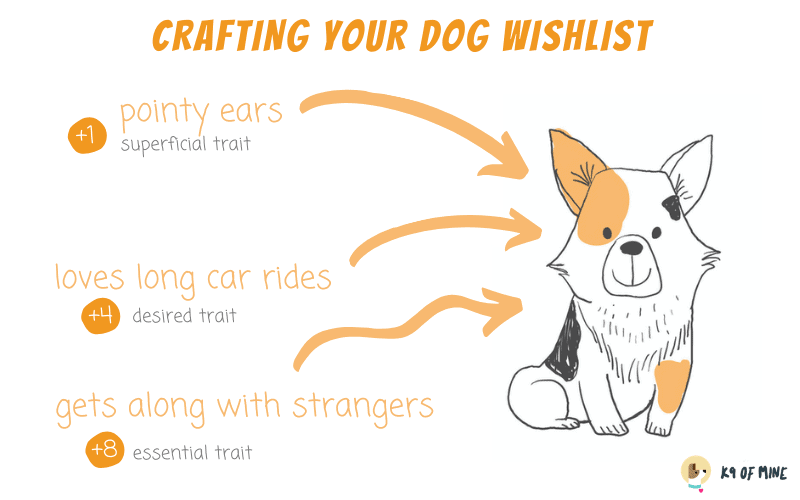
I made my own dog adoption checklist when going through the adoption process. My list was a combination of lofty goals for my dog and my household expectations. I then scored dogs that I was interested in, and eventually adopted Barley – he scored a 93 out of 100!
It might feel weird to “score” a dog – if the idea makes you feel a bit uncomfortable, you could just make a checklist instead.
We’ve created a free downloadable PDF scorecard you can use to evaluate potential adoption candidates – some common scoring traits are already included, but make sure to add your own or adjust our recommendations if they don’t match you needs.
Below we explain a bit more about how this dog adoption scorecard works.
Deal Breakers
Some qualities are going to be “deal breakers” for you. For example, if you have a bird, cat, or another animal in the house, any dog that has a high prey drive won’t be a good candidate.
There may be some traits you know that you need in your dog. You may know that you absolutely want a dog as a hiking buddy for multi-day trips – in which case a 3-legged dog or an older dog with arthritis wouldn’t pass the test.
Necessary Traits: +1 – 10 Points
Other traits are “necessary” or even essential, but they’re not just yes or no questions. For these essential traits, you can rate dogs on from a scale of 1- 10 points.
Desired Traits: +5 Points
“Desired” traits are qualities that you like, but aren’t weighted as heavily – these qualities can earn a dog up to 5 points.
Superficial Traits: +1 Point
“Superficial” traits are basically just bonus points. Some examples of superficial traits might be:
- White toenails (since they’re easier to clip)
- Curly tails
- Pointy or floppy ears
They might be nice to have but aren’t very important (unless you really want a dog with a curly tail – then go ahead and add that to the necessary or desired traits section)!
Research Your Desired Breed
Once you have a good idea of what you want out of your canine companion, begin narrowing down your choices by size and breed group.
Even if you want a mutt, it’s usually possible to discern between a herding dog and a working dog.
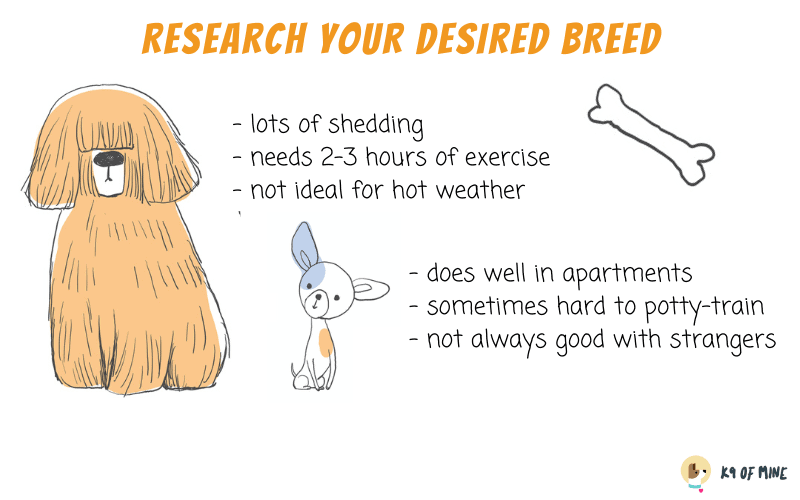
Spending a lot of time on the AKC website isn’t a bad idea here – find out what your final selection dogs are like. Look at their:
- Energy Level
- Long-Term Health
- Grooming
- Friendliness & Disposition
- Plus any other traits that matter to you!
Meet with several adult dogs of your chosen breed and make sure you like their personality, not just their looks!
Puppies: They Aren’t All They’re Cracked Up to Be!
Puppies are oh-so-cute, but they take up a ton of time.
I decided not to take a puppy home because I work 10-hour days and can’t afford a daily dog walker.
Instead, I opted for a 3-year old dog.
If you’ve got really specific goals for your pup, like a service dog or high-level competitor in a dog sport, a well-bred puppy is hard to beat. But puppies are extremely expensive and time-consuming – so consider whether you really want a pup or not!

There are tons of perks to bringing home an adult dog. Senior dogs can be mellow, pre-trained, and easier from day one.
Don’t let anyone tell you that an old dog can’t learn new tricks! They definitely can – the real question is, are you using desirable treats?
Considerations for Shelter Adoptions
Here are a few things to keep in mind when considering shelter adoptions vs breeders.
- Where will your dog come from? You can find just about any type of dog you want at a rescue – but it might take a bit of looking and patience. If you really want something specific in a dog, then a breeder might be the way to go.
- Yes, shelters have puppies too! Shelters generally do tend to puppies at any given time, but they tend to go fast and you probably won’t find a purebred pup.
- Shelters have older purebreds. Shelters and breed rescues will often have older purebred dogs as well as unique mutts.
- Not all shelters are equal. Look for shelters that have clean websites, testimonials, and are open to questions. There are a ton of amazing rescues out there. If a “rescue” gives you an icky feeling, listen to your gut – some rescues are known to actually buy dogs off Craigslist or puppy mills and then “flip” them for a profit!
- Avoid Craigslist or pet stores for dogs – you don’t know who you’re giving your money to, and the dog could be coming from a very bad place. Buying from pet stores fuels the abusive and heartbreaking puppy mill industry.
All this being said – there’s absolutely nothing wrong with a puppy from a good breeder. Adopting a dog from a shelter is great, but good breeders are also a fine, viable option.
If You Choose To Go With a Breeder…
If you do decide to go with a breeder, be very particular about who you work with.
Look for breeders that:
- Only have 1 litter at a time
- Raise the puppies inside
- Do Early Canine Neurostimulation.
- Test for common genetic disorders for your breed
- Don’t breed their dogs too young
Considering a breeder? Make sure to check out our Good Dog Breeder Checklist!
The puppies will likely cost you over $800 and have a waiting list if they’re from a worthwhile breeder. If your needs mean that a well-bred puppy is ideal, then go for it!
Get in contact with a breeder and tell them what you’re looking for. A good breeder will screen you and help you pick out the perfect puppy. If they pick up the phone and tell you to come on by tomorrow to grab a pup, I’d be worried about the quality of their puppy raising.
Puppies from “backyard breeders” usually totally lack the genetics, temperament, and early-life development that would make a purebred puppy worth the cost.
Making The Final Doggy Decision
So you have your checklist. You know what to ask and you’ve got an idea of what you want. You pull up Petfinder, and you immediately fall in love with 273 new dogs.
Using your checklist, you narrow it down to 129 – now you have two options
Option 1: Pick one or two rescues to work with
If you have options, just make a relationship with a rescue that suits your needs. I’d recommend going with a large municipal shelter or a small breed-based rescue, depending on your priorities.
Get in contact with them and see what you need to do to move forward. I call this the “personal pet shopper” approach when it goes well.
If you’re lucky, the shelter will get to know you. They might even put you on a list and call you if and when a dog they think you’ll like shows up!
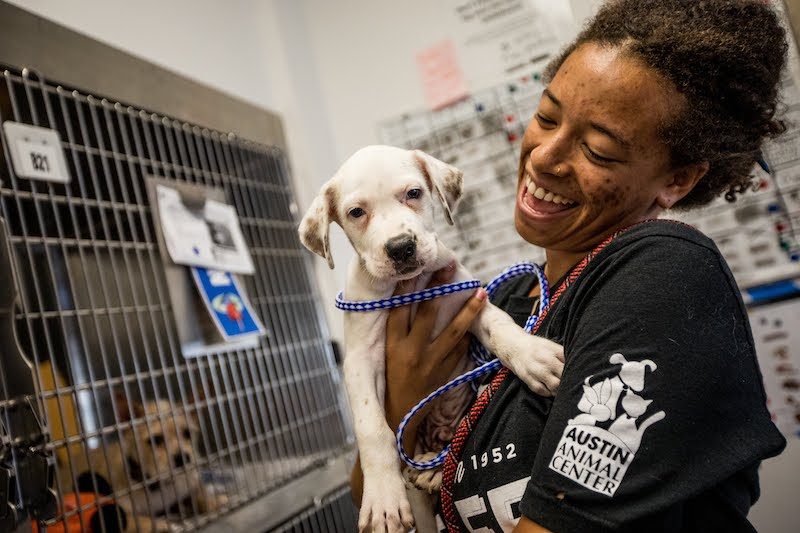
Option 2: Just start going to adoption events and shelters
If you’d rather just get the ball rolling, then go for it! Bring your checklist and just start shopping around.
Petfinder and similar dog adoption websites can be overwhelming when it comes to all the new furry pals you could potentially have! However, it helps to narrow down by area.
Some shelters will advertise dogs that they have at partner shelters across the country. While there are plenty of success stories about owners picking a pooch and not meeting them until they arrive on the giant puppy bus, it’s certainly not ideal.
Instead, it’s advisable to always meet your dog in person (and ideally, multiple times) before committing. Narrowing down your search to dogs that are within a few hours drive is a smart step.
There’s a lot to keep in mind at this step! You’ve already put a lot of work into creating your canine checklist and planning ahead, so take your time meeting your potential pooches and do it right.
Other Things to Keep in Mind When Adopting
Don’t Rush It
If you’re totally dog-deprived, it might be really hard to walk away from the first few dogs. I cried when I returned my first foster dog, but it got easier.
I’m so glad that I waited – Barley is the perfect dog for me. I almost adopted so many dogs before him that wouldn’t have worked out quite as well as he has.
If It Doesn’t Feel Right, Wait
There will be more dogs.
If something feels off about the dog or the rescue, walk away. If you’re feeling rushed or pressured, ask if you can sleep on it. Most rescues and shelters want what’s best for their dogs, so they will happily comply.
Talk It Through With Friends and Family
This is a big decision for your whole family, so make sure everyone is on board. Checking in throughout the process is important.
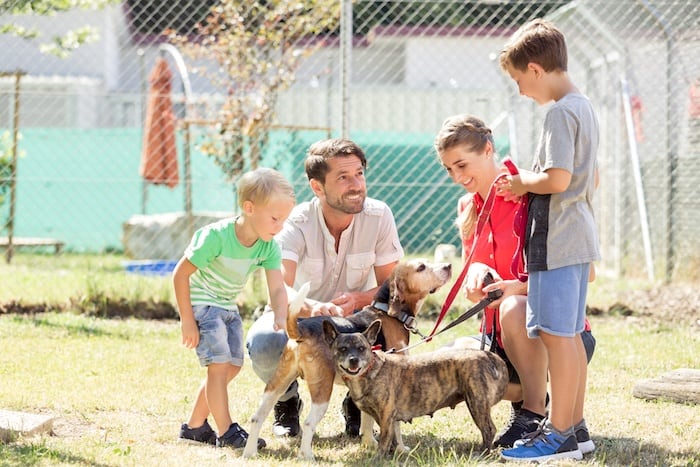
If you live alone, it still might be helpful to bring a trusted friend or family member. Ask that person to try to talk you out of the dog and play devil’s advocate. Addressing those concerns from day one as an exercise will help you in the long run!
Spend As Much Time With The Dog As Possible
Ask if you can play with the dog outside or take the dog for a little walk. Seeing the dog in different situations might help you make the decision.
Remember how stressful this probably is for the dog. He’s in a strange place with strange people. You might not be the first family to meet with him today. The food might be strange and his stomach might hurt. It’s probably loud and chaotic compared to his last home – even if his last home was a puppy mill. He might not really relax with you right away, and that’s ok.
Ask About Foster-To-Adopt Or Trial Adoptions
Some rescues are all about fostering to adopt. Fostering a dog is a great way to bring a dog home for a week or two and see how things go. Plus, even if things don’t work out, you give a stressed pup a nice break from hectic shelter life for a little while and can even provide the shelter with information on the dog’s in-home behavior, increasing the pup’s chance of finding its forever home elsewhere.
Trial adoptions are a little different. You might officially adopt the dog, but you have a grace period to make your final decision. If you decide that this dog isn’t right for you in that time period, you can bring the dog back.
Some shelters don’t offer these options, but it’s still good to ask! We did a trial adoption with one dog that didn’t work out due to separation anxiety. We also fostered 8 dogs before finally adopting Barley. This was a great learning process for us as we decided what we needed in a dog.
If you do foster or do a trial adoption, don’t pressure yourself. If the dog isn’t the right fit for you, that’s ok. The perfect family is out there for that dog.
Being Picky Is The Best Way To Reduce Returns
Don’t feel bad if it seems like you’re walking away from hundreds of dogs (I literally did walk away from hundreds before finding Barley).
Finding the perfect dog for you and your family is the best way to reduce the total number of dogs that are returned to shelters. Walking away when a dog isn’t “the one” is usually the best thing for you, the dog, and the shelter! Being picky reduces the likelihood that you’ll return the dog later.
Questions to Ask When Adopting a Rescue Dog
If you’re going to be shopping around for your new pup, be sure you know what you want to ask about. This ties into your goals and expectations for your dog.
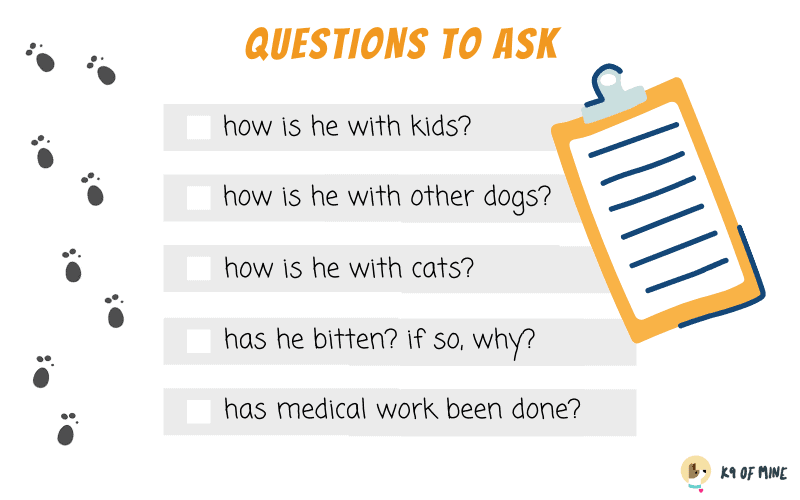
The rescue or shelter may not have the answer to all of these questions, and that’s ok, but don’t hesitate to ask if you have a question on your mind.
- How is the dog with kids? What age of kids has he been exposed to? If you have a child but the dog has no known history with kids, I’d skip over that dog for safety reasons!
- How is he with other dogs? What age and sex has he met?
- How is he with cats?
- How does he respond to men? Women?
- How does he do with strangers?
- Does he have a history of escaping? What were the circumstances if so?
- Does he have any history of destruction? Under what circumstances?
- What medical work has been done on the dog? Ask to see the medical and vaccine records.
- Does he have a history of barking, growling, lunging, snapping, or biting? Under what circumstances?
- Has the dog shown any concerning behaviors from its history or while under the care of the rescue?
- Where was this dog kept? Where was he from? This is very important. Knowing that your dog was rescued from a puppy mill or hoarding situation will help adjust your expectations as far as training and socialization. Some rescues or shelters might not know – my own border collie was left in an overnight kennel at the shelter with very little information.
A dog with a “bite record” doesn’t need to be passed over if he’s otherwise lovely. It is important to gather as much info as possible on the circumstances of the incident.
A dog that broke skin when he missed the tug toy, or bit when he was in severe pain, is very different from a dog that lunged and bit a stranger in the middle of a walk.
Financial Costs of Pet Ownership
Make sure you’re in a good position for a new dog financially, as it’s important to consider how much your new dog will cost you.
Cost Breakdown
Most dog budgets account for about $100 per month, per dog. This doesn’t usually include things like regular dog walking or doggie daycare, which easily run $100 per week.
Expect the costs to be higher for the first month or two of dog ownership as you get your dog up-to-date on basic vet checkups and buy supplies.
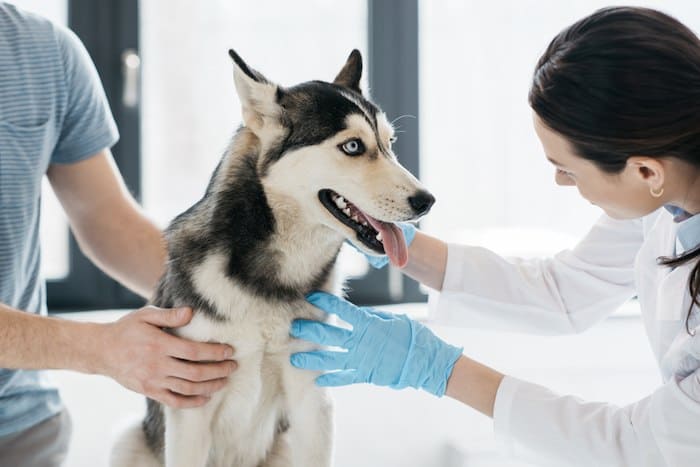
Puppies from breeders will be the most expensive right off the bat (and usually require more up front costs involving vaccines, spay/neutering, etc), but that doesn’t mean that an adult from the shelter will be cheap in the long run!
Young and adult dogs alike susceptible to illness or unexpected accidents that can quickly eat up a rainy day fund.
Pro Tip: If your budget can’t swallow a $5,000 surgery down the line, getting pet health insurance is a good idea!
Time Budget: How Much Time Can You Spare?
Remember, dogs require a time investment as well as a monetary one!
I wake up 45 minutes earlier than I used to now that Barley is in my life (and forget about hitting the snooze button).
I have to be sure to come right home after work to let him out before I leave again for bar trivia or dance classes. I dropped my gym membership because I spend so much time running with Barley instead of going to the gym for exercise. I also spend 20 minutes every night training Barley – and that doesn’t even include our weekly nosework classes!
Dogs need lots of mental and physical stimulation, so be sure you’ve got time for exercise and training!
It’s worth considering what sacrifices you’ll need to make for your pooch – flexibility gets lost, as you won’t be able to join in on last minute happy hour plans with work or spur-of-the-moment activities.
Make sure you think about whether you’re ready to give up spontaneity for your pup!
Training Classes: A Necessity of Raising Any Canine
All dogs should go through at least a few training classes.
Puppies under 16 weeks must go to a good socialization class – or else you’ll suffer for it the rest of your dog’s life!
Event adult dogs with poor or no manners will benefit from a good basic obedience course with a positive-reinforcement based trainer.

Dogs that already have decent canine manners will likely benefit from something more fun, like Canine Good Citizen courses or a dog sport (like canicross or skijoring).
This is all part of raising a healthy dog with a healthy mind! Training strengthens your bond and gives your dog something to do. Remember, your dog probably spends the whole time that you’re at work asleep, so when you do arrive home, he’ll be desperate for activity.
Keep in Mind Your Home or Apartment Layout
Be sure to keep your living situation in mind as you consider a dog.
Check your lease to make sure that pets are allowed, and be sure to budget for additional fees and pet rent. Your lease might also limit the weight, number, or breed of dogs that are allowed.
Active and lazy dogs alike can thrive in homes with yards or in apartments.
You will have to take your dog outside to grassy open spaces several times a day, every day. Rain or shine, health or illness, you’ll need to lace up your shoes, grab your keys, and take your dog outside.
That said, a yard isn’t a free pass from exercising your dog. All dog should go on a good walk once or twice a day!
Once you’ve gotten a general sense of what your new dog will need and what sacrifices you will have to make for the benefit of your new four-legged buddy, you’re ready to start looking for a dog.
As this process starts, some common questions include:
Is There a Best Time of Year to Adopt a Dog?
Maybe.
Puppies adopted in late spring are more likely to be exposed to fireworks, thunder, water, and the outside world. This puppy socialization is imperative before the age of 16 weeks, so I recommend getting a puppy around May.
It’s also smart to get a puppy when you are able to spend more time at home or take a couple weeks off to get your pup adjusted. For teachers, this might mean the beginning of the summer is ideal!
The timeline benefits for adopting an older dog are less clear.
I planned on adopting around March because it was after a big trip and I don’t usually have big expenses in March. If you always spend a ton of money and time on your garden every April, it might be best to wait until after that to get a dog.
Getting a new dog right before a big trip or holiday can be really overwhelming for the dog as well, so avoid Christmas time adoptions!
Think about what is going on in your life and choose your adoption schedule based on when you’ll have the most time to devote to your new doggo!
How Much Does it Cost to Adopt a Dog From A Shelter?
Rescue dogs are generally much less expensive than purchasing a puppy from a breeder.
A good rescue will only adopt out neutered or spayed dogs (that saves you a few hundred bucks) that are up to date on vaccines (there’s another couple hundred dollars).
That said, the expenses for any dog can still add up for just the first month!
Even with all the supplies that I had leftover from fostering dogs, Barley cost me about $500 for his first month. I’m expecting him to cost me about $150 per month for the rest of the year.
| Service | Cost |
|
Adoption Fee |
$100 – $500 |
|
Vet Checkup (Includes Heartworm / Flea & Tick Meds / Vaccines, etc) |
$150 – $400 |
|
Dog Bed |
$30 – $50 |
|
Dog Toys |
$30 – $50 |
|
Leash |
$10 – $30 |
|
Collar / Harness |
$10 – $30 |
|
Training / Obedience Classes |
$150 – $300 |
|
Crate |
$30 – $150 |
|
Pet Health Insurance |
$25 – $100 per month |
|
Food |
$50 – $100 |
|
Treats |
$10 – $30 |
Food and Water Bowls |
$10 – $50 |
|
Grooming |
$0 – $150 |
|
Stain / Odor Removers |
$10 – $50 |
|
Pet Rent / Pet Deposit Fees |
$0 – $500 |
Setting Up the Rules of the House: What’s Allowed and What’s Not?
It’s important to have a clear idea of what is ok and not ok with your dog – this is true whether you live alone or with others (it’s even more important to establish these rules when you’re in a family).
Setting up behavioral expectations from day one will help your new dog adjust right away – plus these household rules can also help you find the right dog. These are different from your dream dog ideas from above. Instead, these are practical, everyday expectations.
Some things to consider:
- What will the dog do while you’re at work? Will he be roaming the house or crated or at daycare?
- What do you want your dog to do while you’re eating?
- Where will your dog sleep?
- Who exercises the dog, and when?
- Who helps with the dog’s training?
- Is the dog allowed on the furniture?
- How should the dog respond to guests?
If you have children who you expect to share in some of the dog-raising duties, consider putting together a family dog contract that outlines each family member’s responsibilities in caring for the new canine companion!
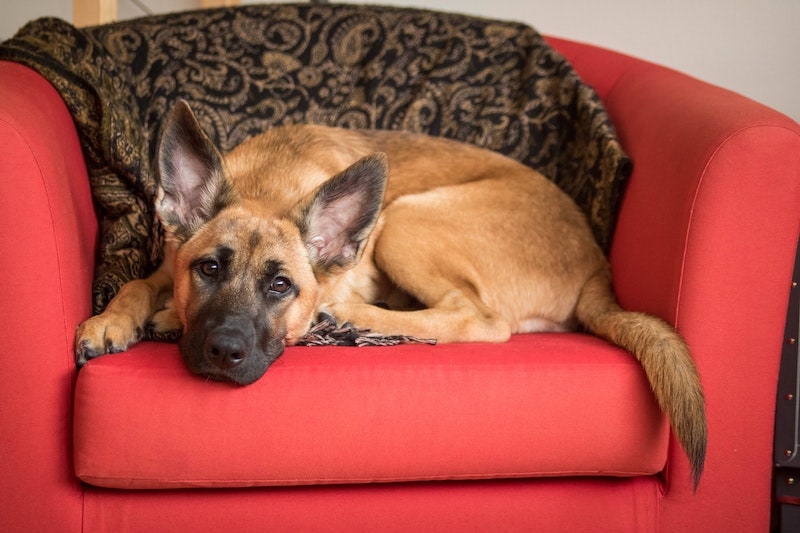
The Night Before Poochmas: Final Prep Work Before Your Pup Arrives!
You’ve chosen your canine pal and can’t wait for his arrival! Just don’t let that excitement get in the way of your final preparations before you bring Fido home.
Before you bring your dog home, make sure you’ve got all the necessities lined up. Right on that first day of arrival, you’ll need:
- Food
- Bowls
- A bed
- A crate
- A collar and leash
- Toys
- Treats
And that’s just the minimum you need!
In addition to must-have doggie gear, you’ll also want to do a few other things to prep your space for your pooch:
- Get Your Dog’s Sleeping Space Ready. Set up a quiet space for the dog where you want him to eventually sleep. If you want your dog to sleep in your bedroom, create a space in the bedroom just for him.
- Prepare Comfort Items. Also add in an old sweater that smells like you to your dog’s safe space. This will help him associate with your scent and can aid in the bonding process. Make sure it’s old – your dog might chew it or have an accident on it! Then stuff your Kongs (two or three of them) with peanut butter, cream cheese, or wet dog food and chuck them in the freezer. These are like pacifiers for your new dog. I use them religiously.
- Don’t Take Your Dog Out On The Town Quite Yet. Don’t take your new dog to Petco on day one. If you don’t have this stuff yet, take your dog home and get help with errands from a friend or family member, but leave the dog at home. She’s probably incredibly stressed and will need some time to relax. Some dogs show stress by being hyperactive, but you still need to take those first 48 hours very easy.
What Comes Next?
You’re probably so excited to finally have your new dog adopted and ready to come home with you!
That said, the first days or even weeks with a new pet is a big adjustment period (remember your first roommate?). There will be accidents, annoyances, and miscommunication.
See our next installment of this series for more on the first 48 hours with your new shelter dog – starting at the ride home!
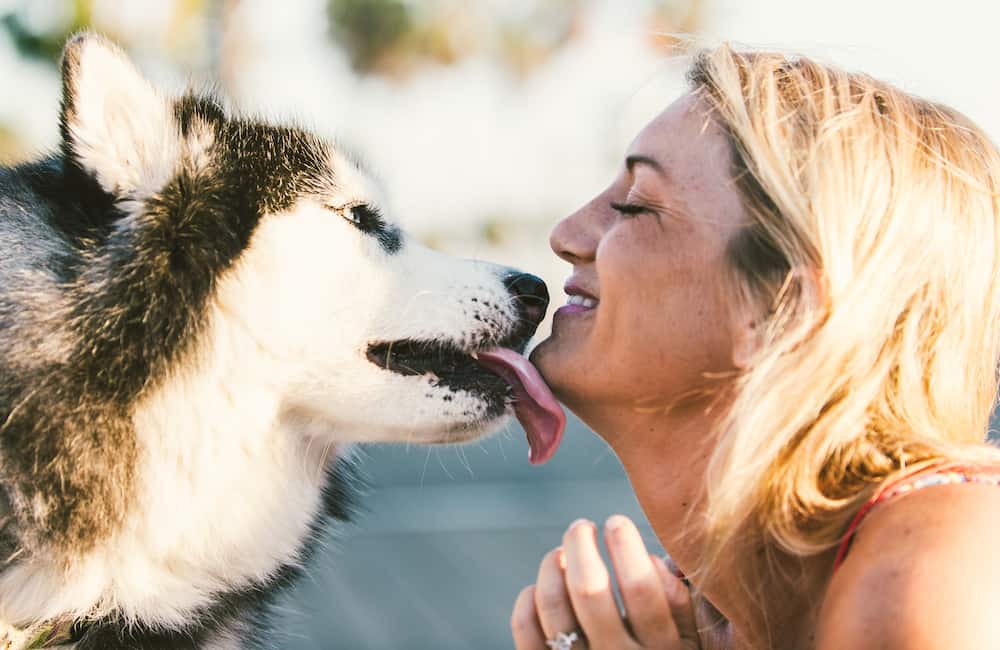

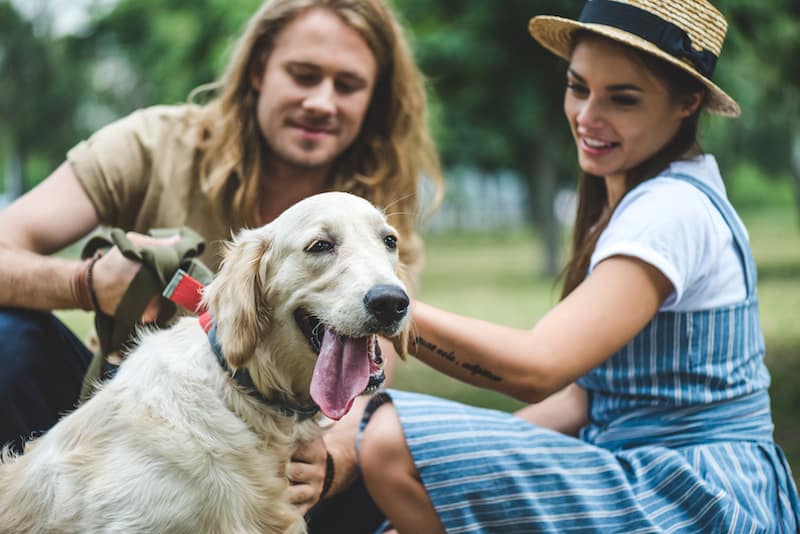


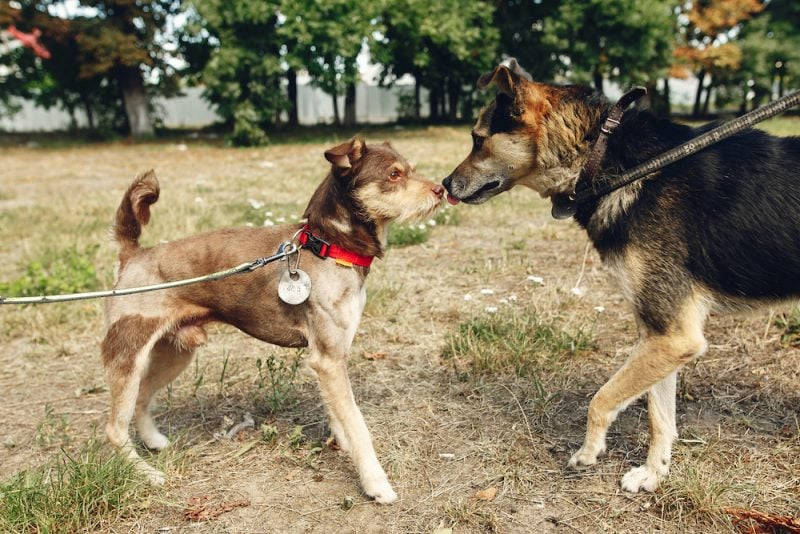
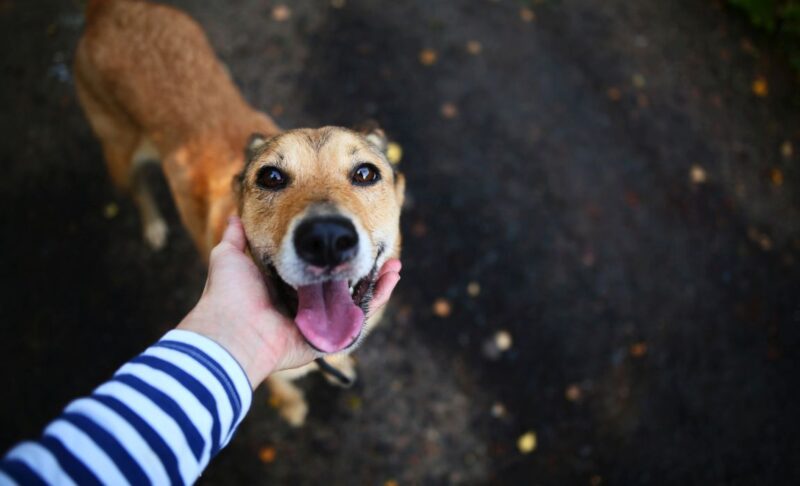

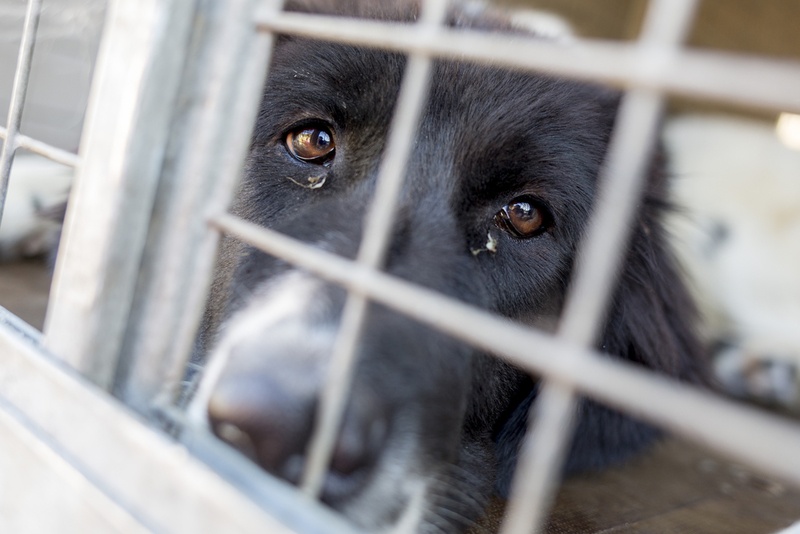
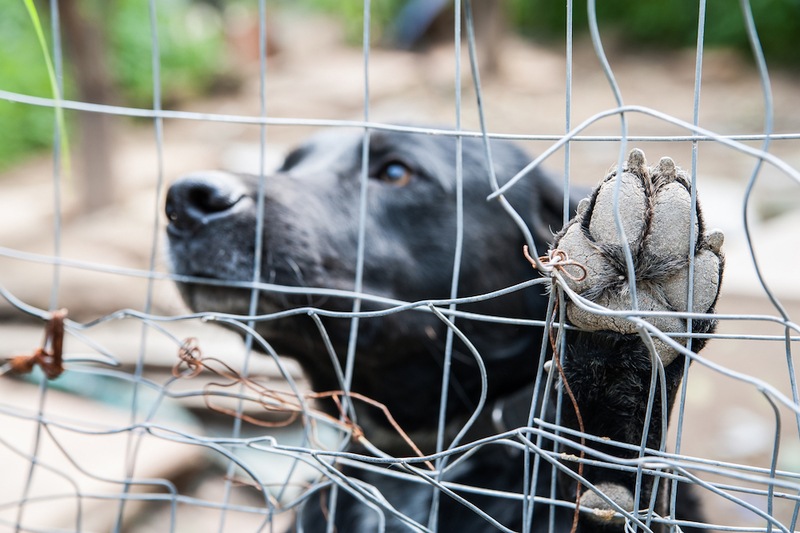

Leave a Comment